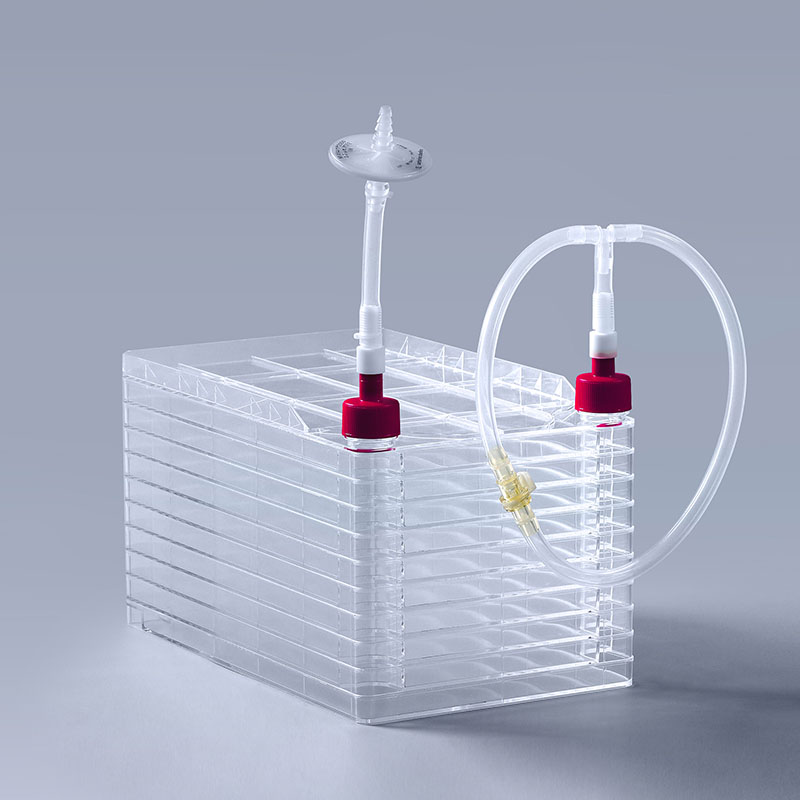With the rapid advancement of biotechnology, cell factories have emerged as advanced cell culture tools playing an increasingly crucial role in vaccine research and production. They offer advantages of efficiency, speed, and consistency, making them powerful tools in vaccine development and production.
1. Layered Structure Advantage
Cell factories utilize a multi-layered design that significantly enhances space utilization for cell culture. This design allows cells to achieve large-scale cultivation within limited space, meeting the enormous demand for cell quantities in vaccine production. Moreover, the multi-layered structure promotes uniform cell distribution and ensures adequate supply of nutrients, supporting healthy cell growth.
2. Suitable for Culturing Adherent Cells
Many viral vaccines for human use are produced using adherent cells such as Vero cells, human diploid cells, and primary chicken embryo cells. Cell factories optimize culture conditions and provide suitable adherent surfaces, creating an ideal growth environment for these cells.

3. Consistency in Linear Scale-Up
One of the key features of cell factories is their linear scalability, ensuring stable growth characteristics and product quality from laboratory scale to industrial production scale. This consistency is critical for vaccine research and production as it helps shorten process development times, accelerate vaccine development, and respond swiftly to emerging infectious disease outbreaks.
4. Driving Development in Vaccine Research and Production
As large-scale cell culture technology continues to improve and expand its applications, the field of vaccine research and production will encounter more development opportunities. In the future, cell factories are expected to play a greater role in improving vaccine production efficiency, reducing costs, and enhancing product quality. Furthermore, with the integration of cutting-edge technologies such as synthetic biology and gene editing, these cell culture tools may achieve finer control and optimization of the vaccine production process, further driving innovation and development in the vaccine industry.
In conclusion, as powerful tools for vaccine research and production, cell factories play a crucial role in addressing global health emergencies and ensuring public health security. With ongoing technological advancements and expanding applications, they are poised to unlock greater potential in the future vaccine industry, contributing significantly to human health advancements.
The FAI climbed 5.9 percent year-on-year in the first 11 months of 2018, quickening from the 5.7-percent growth in Jan-Oct, the National Bureau of Statistics (NBS) said Friday in an online statement.
The key indicator of investment, dubbed a major growth driver, hit the bottom in August and has since started to rebound steadily.
In the face of emerging economic challenges home and abroad, China has stepped up efforts to stabilize investment, in particular rolling out measures to motivate private investors and channel funds into infrastructure.
Friday's data showed private investment, accounting for more than 60 percent of the total FAI, expanded by a brisk 8.7 percent.
NBS spokesperson Mao Shengyong said funds into weak economic links registered rapid increases as investment in environmental protection and agriculture jumped 42 percent and 12.5 percent respectively, much faster than the average.
In breakdown, investment in high-tech and equipment manufacturing remained vigorous with 16.1-percent and 11.6-percent increases respectively in the first 11 months. Infrastructure investment gained 3.7 percent, staying flat. Investment in property development rose 9.7 percent, also unchanged.
 English
English


















































